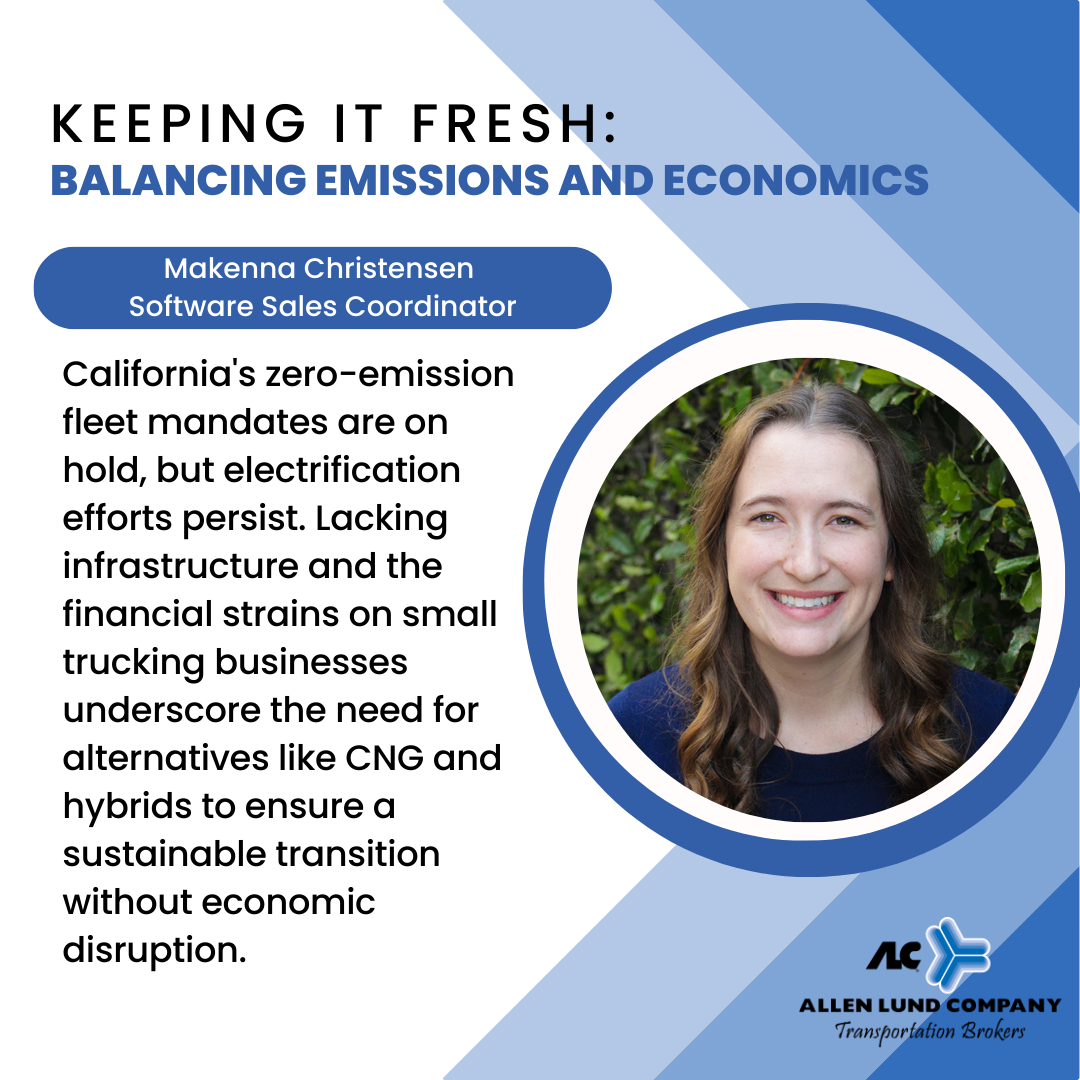
California’s requirements for zero-energy fleets may be on hold, but the push to electrify the transportation industry is far from over. In March, the U.S. Environmental Protection Agency released new emission standards, outlining limits on carbon dioxide emissions that become increasingly stringent each year from 2027 to 2032. [pqeopybab.cc.rs6.net] While these regulations are well-intentioned, forcing carriers to comply with unreasonable standards will have impacts far beyond the transportation industry.
As of April 2023, there were over 750,000 active motor carriers in the U.S., 95.8% of whom operate 10 or fewer trucks. [pqeopybab.cc.rs6.net] These small businesses are the backbone of our economy. Without them, store shelves would be empty and we would struggle to find food to put on our tables. Look no further than the 2021 global supply chain crisis to see what happens when shipping demand outpaces truck supply. Like every other business, trucking companies must minimize costs to maximize profitability. When the annual cost of operating battery-electric big rigs is about twice as expensive as diesel trucks [pqeopybab.cc.rs6.net], the transition to zero-emission fleets becomes fiscally impossible for some companies. Add-on government mandates, like those in California, and you have a recipe for disaster.
Battery-electric is not the only zero-emission fuel source. Some long-haul drivers have turned to hydrogen fuel as an alternative since it allows them to travel lighter, farther, and faster. [pqeopybab.cc.rs6.net] However, a lack of fueling infrastructure and large costs associated with ownership are serious barriers to adoption.
Beyond the immediate impacts, the shift to zero-emission trucks will have financial repercussions on millions of consumers. According to a March 2024 study, “The charging infrastructure for a nationwide fleet of 100% electric trucks – from delivery trucks to big rigs – will cost $622 billion.” [pqeopybab.cc.rs6.net] Further analysis suggests the additional cost will be passed along to consumers, adding approximately 0.5% to 1% to overall inflation. [pqeopybab.cc.rs6.net] For a nation already waist deep in debt, I’m not sure we can handle that burden.
The goal to cut carbon emissions is desirable, but forcing small businesses into bankruptcy gets us nowhere. If legislators want to enable lasting change, they need to slow down and focus on smaller, more economically sound solutions to our climate crisis. Compressed natural gas (CNG) has been found to reduce tailpipe greenhouse gas emissions by about 20% [pqeopybab.cc.rs6.net] and could be a welcome alternative to diesel since it is widely available and affordable. Further, the adoption of diesel-electric and gasoline-electric hybrid trucks could help the transition to zero-emissions fleets without bringing our supply chain and economy to a halt. We may not currently know all the answers, but when we empower small businesses to take action we can do just about anything.


